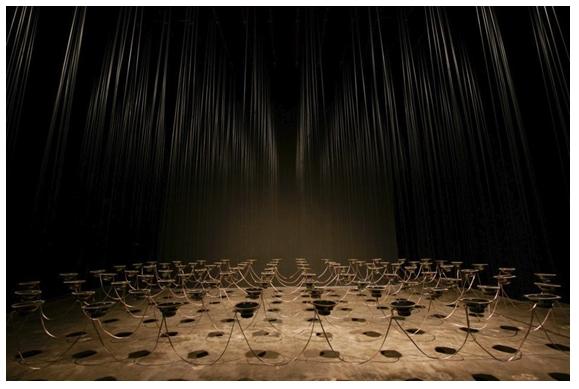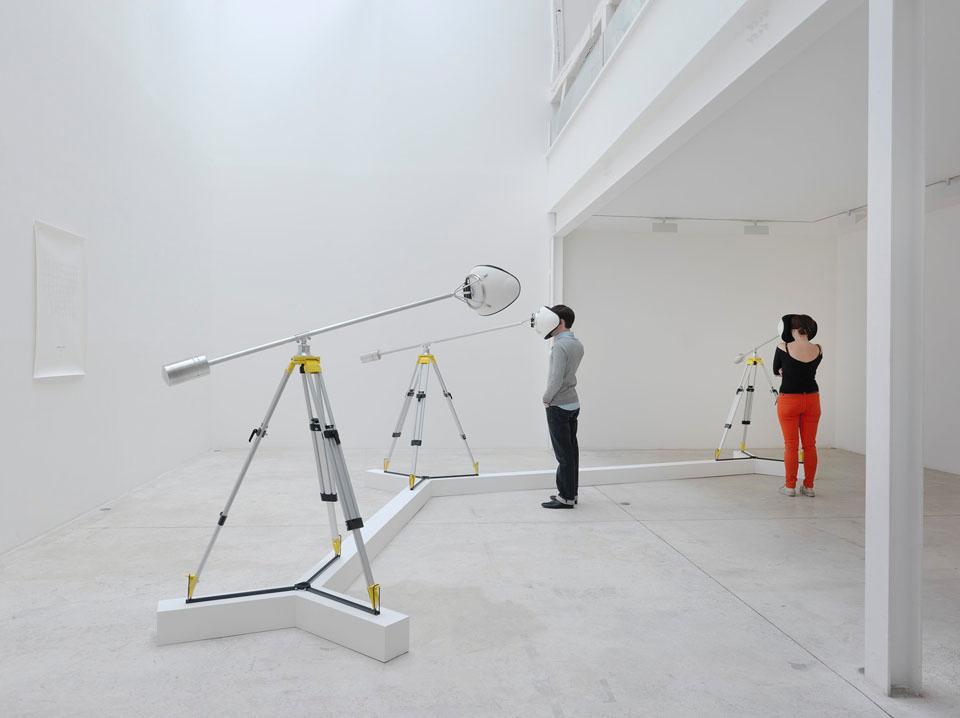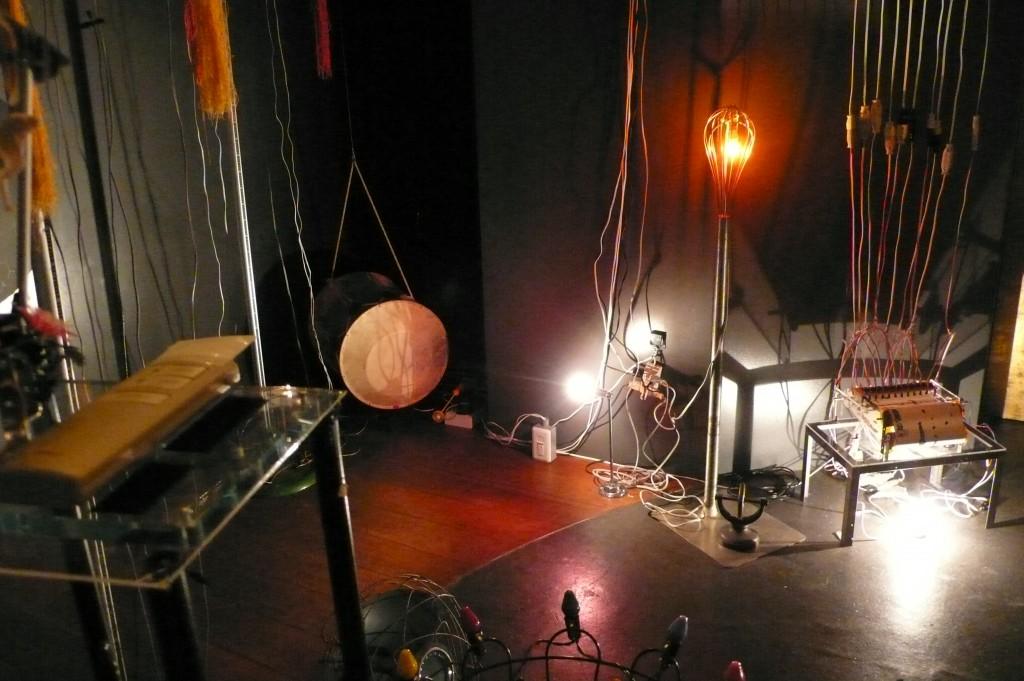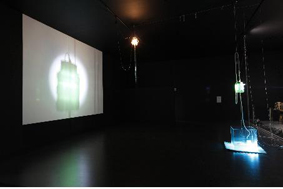Date : March 9, 2012 ~ July 1, 2012
Program : Exhibition, Public Program
Artist : Didier FAUSTINO(France),
Loris GREAUD (France),
Haroon MIRZA (UK),
Susan PHILIPSZ (UK),
Anri SALA (Albania),
Takahiko IIMURA (Japan)
Yuko MOHRI (Japan),
Kichul KIM (Korea),
Sei RHEE (Korea),
Otomo YOSHIHIDE + Yasutomo Aoyama (Japan)
Tetsuya UMEDA (Japan),
ZIMOUN(Switzerland),
John CAGE (1912-1992, US),
Nam June PAIK (1932-2006, Korea)
Nam June Paik Art Center is to present “x_sound: John Cage, Nam June Paik and After.” The year of 2012 marks the 80th anniversary of Nam June Paik’s birth and the 100th anniversary of John Cage’s birth. The exhibition includes Cage’s and Paik’s works, but also works of today’s sound artists inheriting the two frontiers’ experimentations.
Supported by
The term “x_sound” has a triple meaning: a sound that is unknown(x), that is ex-panded and that ex-pels fixed ideas about sound. “Sound” itself is literally a neutral and straightforward term, but in the contemporary art’s context, it’s a complex arena of different questions and discourses. Sound in experimental music opens up the possibility of overcoming the limitations of harmonious but canonized twelvetone music. Sound in visual art leads to the indeterminism of visual art, beyond ocularcentric perspectival space, and becomes an ingredient for expanding the concept of architectural space. The sound was a symbol of alternative art which goes against the rationalistic and evolutionary attitude of Western art, and therefore fascinated many contemporary artists, among whom are John Cage and Nam June Paik.
Cage opened a new chapter in music with his 4’33” in which a performer sits at the piano and played nothing for 4 minutes and 33 seconds. His experiments in the 1960s and Zen sensibility had great influence upon Paik. Inspired by Cage’s experimental music, Paik who had studied contemporary music in Japan and Germany paid homage to Cage and developed his mentor’s sound experiments into installation and performance work (a.k.a. “Action Music”). Now the typical ‘music’, consisting of melodies and rhythms, was expanded to include everyday ‘sound’ indistinguishable from ‘noise’ and even the audience’s response. Furthermore, Paik rendered the mechanisms of sound visible in space by applying such things as pieces of paper or toys to musical instruments, and also created more unexpected scenes by including the audience’s action in the performance. The exhibition will present proofs of their interaction with each other, as shown in Paik’s Hommage à John Cage (1958), Variation 5(1965) and A Tribute to John Cage (1973).
The waves initiated by Cage and then extended by Paik are generating certain resonances in sound installations by our contemporary artists with new media, new context, and above all, new sensibility. Kichul KIM (Korea), who has persistently explored the visualization of sound, arranges speakers emitting the sound of nature in the exhibition space in a way that they can maximize the associations of hearing and sight. Haroon MIRZA (UK), uses two kinds of sounds, one created by non-acoustic devices in everyday life, and the other produced by acoustic devices handled in unusual manners. ZIMOUN (Switzerland) uses a weird frictional sound in order to draw the audience into a structure made up of empty boxes vibrated by hundreds of small motors. Anri SALA (Albania) catches the emotional interaction between sound and space, by filming a break-up conversation. Susan PHILIPSZ (UK) edits various songs with rich but complex historical implications and sings them herself. She leads the audience to encounter her songs in an unexpected spot. Inspired by Cage’s experiment, Loris GRÉAUD (France) recorded the ‘silence’ made when Sonic Youth’s legendary guitarist Lee Ranaldo was ‘thinking’ about his music, and photographed the scene. And Otomo YOSHIHIDE (Japan), famous for his unique sound installations and performances, composes a concerto of different noises using dozens of turntables. The works of these artists do not make sound that you merely listen to in the exhibition room; rather, they show psychological and physical tensions caused by sound, an environment built up by sound, the ways in which sound mixes history and emotion, the ways in which sound crosses between mathematical order and chance, a close inquiry into the relationship among space-sound-body, and so on.
Various sound performances will also be presented along with the exhibition. On the opening day there will be a performance of John Cage’s Imaginary Landscape No.4(1951), a ‘radio’ orchestra with twelve radio receivers by 24 students from the Department of Composition in Chugye University For The Arts and Yoshihide’s performance using turntables. During the exhibition period, a series of contemporary music concerts of Cage’s works will be held to facilitate the understanding of his music.
1F

The title is a tongue-in-cheek reference to the fact that the word ‘cage’ means an enclosure for confining birds. Paik keeps Cage ‘in cage’ but Cage in cage never ceases to pursue new music, dropping fragments of a broken piano on the bottom as if they were excrement.

Out of respect for Cage’s radical aesthetics of music, Paik created a video documentation of Cage’s multifaceted art. It mainly features Cage’s 1973 performance of his famous 4’33” at the age of sixty in which he was sitting in complete silence at the piano placed in Harvard Square. It also includes performances different sites in New York following the sixty-four hexagrams of I Ching (Book of Changes), a performance measuring Cage’s brain waves, and so on.

Paik’s Klavier Integral (1963) refers to the four pianos presented in his first solo show in Germany. They were set up to make radio or a light bulb turned on, etc. when the keys were pressed. Pressing various keys on the piano, visitors could enjoy not only auditory experience but also other sensorial ones.

Paik created a series of pianos with TV monitors embedded. TV Piano, made in 1993 with thirteen TV monitors, is the biggest one. The piano brings the surrounding environment to itself through a closed circuit system, suggesting Paik’s intention to expand music to sound by means of media.
2F


Kichul Kim’s work begins from making invisible sound visible. In order to evoke the imagination of visitors, Kim creates a situation of filling the void with sound. The two sound installations Sound Looking-rain and Sound Looking-wind are based respectively on the sound of rain recorded in the Jongmyo Royal Shrine, Seoul, and that of wind gathered in other various places. The visitors will be surrounded by the ambience of the sound, which will give a special synesthetic experience.

Haroon Mirza brings into relief everyday sounds, by making visible the connection between object and its sound. He often integrates others’ works into his own one: for , he reinterprets with LED lamps a minimalist Fred Sandback’s work. Visitors will be led to enter the space and to catch personally the relation of different sounds. LED noises, movement from speaker and visitors’ bodies constitute together a kind of total work (Gesamtkunstwerk).

Swiss artist Zimoun, who received an Honorary Mention in Digital Musics & Sound Art category at Ars Electronica 2010, builds up a structure by repeatedly arranging a box-shaped module vibrated by a small motor. Before noticing how the sound is being generated, visitors instantly feel the huge vibration with sound through their body, realizing a unique point at which space, noise, and vibration are organically linked with one another.

Answer Me presents a farewell scene: a woman says that she wants to break up, but her voice is silenced by her companion’s drumming, while a small snare drum beside her keeps beating because of the vibration of his drumming. The emotional tension is expressed through the incommunicable sounds and the physical movement, representing their complicated relationship. Furthermore, this break-up scene was shot in the place that had been used to tap Soviet and East German communications during the cold war, and thus the emotional tension represented by the sounds also implies the historical context.

Yuko Mohri creates an installation with a mechanical structure by using everyday items. These common objects, or the artist’s collection since childhood, get a new face in her works. The title of this sound installation came from the name of a garden which used to be near her home in her childhood. To her, these old, worn-out objects are a kind of “record medium.” In Ofuna Flower Center, each object becomes an actor with its own role and connected with one another to be a score to be played harmoniously.
along with Aleksandra Signer, Record

In Sanctuary, acoustic devices produce not the sound they are supposed to make, but noise or discord generated by the interference of waves. The noise, however, gets interfered with another noise coming from a video by Aleksandra Signer. In the video, a young woman flings LPs to the wall. During the few seconds when they are traveling from her hand to the wall, the 20 to 30 minutes of music on each record is all played at very high speed. The film shows the process in which noises in music become harmonized with other noises to merge into a new piece of music.

Otomo Yoshihide is an experimental musician, composer, turntable performer, and guitarist, widely known for his free improvisation performances with musicians of wide-ranging genres including noise and jazz. Without Records is composed of dozens of turntables, but these record players are spinning without vinyl records. Instead, their needles, which are all different from one another, are equipped with unusual materials such as corrugated paper or iron, so that the turntables play not LPs but themselves, disintegrating their own function. Hearing that the multiple layers of music, which is created by this installation, gather or disperse, the visitors will be able to experience a different world in a different dimension where sound and space join.

Conceived by French architect, installation artist and performer, Didier Faustino, this devise looks like an instrument for observation of something outsides, but rather leads to visitors to their insides by repetitive sounds “Don’t believe architect”. Although having a meditation time, paradoxically visitors will become keener to the outside world.

Sei Rhee organizes a narrative by making relations between moving and still images or between sounds and objects. For this, she creates a montage of different media and then turns it into a structure or a pattern, combining together sound and image as a unit. In this installation, visitors will be provided with visual and auditory experiences combined, which are normally separated in daily life.
Tetsuya Umeda has presented installations and performances which are unpredictable and contingent on place or situation by using such fundamental media as ‘water, wind, light and sound.’ The harmony of the auditory and visual elements of his installation, which comprises everyday things like an electronic fan, boiling water, and the shadows of balloons, evokes a poetic atmosphere in the space. The subtle sounds and movements made by these small articles give a new form of chance, sensibility and energy to the entire exhibition space.























